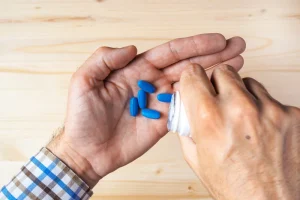
According to the National Center for Biotechnology Information, the body’s pH levels influence the half-life duration for amphetamines. A pH level measures the degree of acidity versus alkalinity as far as a person’s body chemistry goes. While half life of amphetamines any user can develop an Adderall addiction, addiction is more likely in a recreational user because a doctor is not monitoring their dose. A 2016 study suggests that Adderall misuse and addiction are most common among people aged 18–25 years.
- Caution advised in patients with underlying medical conditions that might be affected by increases in BP or heart rate (e.g., hypertension, heart failure, recent MI, ventricular arrhythmia).
- Do not chew or crush the pellets contained in the capsules and do not store the sprinkle/food mixture for later use.
- Effects peak about 4−7 h after ingestion of extended-release doses, and last about 12 h, depending on the endpoint and dose.
ER formulations
Following this delay, the drug concentrations rise rapidly and generally produce an ascending absorption profile. Peak concentrations are achieved at 16–18 hours and this is followed by a slow decline in concentrations. It appears that more than half of the MPH exposure occurs after the peak concentration is achieved, thus achieving an extended duration of action.

Drug Testing Considerations
- The European Union Drugs Agency (EUDA) is your source of drug-related expertise in Europe.
- For example, a person taking 10 mg of dextroamphetamine will still have 5 mg in their body 12 hours later, 2.5 mg 24 hours later and so on.
- However, this does not mean that won’t be detectable, for example, during a drug test.
- Although the therapeutic mode of action is not fully known, amphetamine is highly efficacious for the reduction of core ADHD symptoms in children, adolescents, and adults.
We strongly recommend erring on the side of using lower estimated doses and retitrating the dose based on response and tolerability. Localized contact dermatitis is a frequently reported side effect, typically manifests by slight and transient redness at the application site. The technology used in the patches minimizes the risk of dermatitis compared to other transdermal products, but the risk exists. This limited dermatitis appears to be a reaction to the adhesives in the patch as opposed to the drug itself. One study set out to explore the risk for more serious skin sensitization.
Clinical Trials
A European study documented recent increases in hospital admissions for amphetamine-induced paranoid psychosis 194. The concomitant use of Adderall and CYP2D6 inhibitors may increase the exposure of Adderall compared to the use of the drug alone and increase the risk of serotonin https://ecosoberhouse.com/ syndrome. Initiate with lower doses and monitor patients for signs and symptoms of serotonin syndrome particularly during Adderall initiation and after a dosage increase. If serotonin syndrome occurs, discontinue Adderall and the CYP2D6 inhibitor [see WARNINGS, OVERDOSAGE].

However, because of the limited efficacy (short-lived) and risk of abuse, such use no longer is included in the FDA-approved labeling and is discouraged. To address continuing concerns of misuse, abuse, addiction, and overdose of prescription stimulants, FDA is requiring updates to the Boxed Warning and other information to ensure the prescribing information is consistent across the entire class of these drugs. In 1991, there were still fewer than 500,000 annual prescriptions written for amphetamine in the US. Over the ensuing decade and a half, however, the amount of amphetamine produced and the number of prescriptions written in the United States increased dramatically. Regardless of indication, amphetamines should be administered at the lowest effective dosage, and dosage should be individually adjusted according to the therapeutic needs and response of the patient. Late evening doses should be avoided because of the resulting insomnia.
Adverse Effects
Most blood tests are only effective for four to six hours after a person uses the drug. After this point, the amphetamines are no longer racing through the body to provide their effects. A good rule of thumb is that if you feel the effects of using amphetamines, it is still possible to detect it in the blood in most cases. The meth detection window may be slightly longer, for example, than dextroamphetamines. As a result, many reasons exist for determining if there are drugs in a person’s system. It is common for employers to drug-test employees, for example, to ensure it is safe for them to work.
















